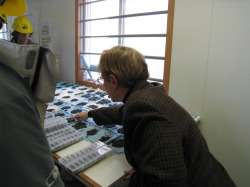Carbon dioxide storage 101

Scientists and engineers will soon be able to receive advanced training and certification in burying and permanently storing underground the greenhouse gas carbon dioxide as part of a recent stimulus award from the Department of Energy. The DOE awarded nearly $1 million to the Seattle-based Environmental Outreach and Stewardship Alliance (EOS) to develop a carbon capture and sequestration (CCS) curriculum that will be used to build a skilled workforce through regional training.
The EOS will work with key partners, including DOE's Pacific Northwest National Laboratory (PNNL) and the Washington Society of Professional Engineers, to develop a regional CCS technology training and certification program by 2012.
"We will need substantially more trained personnel - scientists, engineers, technicians, operators, regulators and others in this field - to maximize the promise of carbon capture and storage technology and address climate change," said Mike Davis, associate laboratory director for Energy and Environment at PNNL.
Through a series of courses and on-site training, students will be able to learn about the fundamentals of geologic sequestration, and the technologies required for site development, operations and monitoring of commercial CCS projects.
Curriculum offerings will include lectures on approximately 14 CCS-related topics; several three-day CCS combined short courses; and tours of CCS research laboratories, including an active sequestration test site near PNNL's Richland headquarters. The project organizers also plan to make lectures and other relevant course material available on the Web for students who cannot attend in person, which will reduce the program's overall carbon footprint.
A first round of students could enroll in the program as early as 2010.
"The CCS certificate program will provide real-life training and hands on experience from world-class experts in this field," said Erick McWayne, executive director of the EOS. "We hope to draw a majority of students from the Pacific Northwest so they can immediately apply new skills to where they live and work."
PNNL is conducting laboratory and field research in the Pacific Northwest to assess the feasibility of permanently storing carbon dioxide in basalt, a type of igneous rock common in eastern Washington, Oregon and parts of Idaho. This research is part of a DOE-funded program administered by the National Energy Technology Laboratory to evaluate the suitability of various types of geologic formations and to advance technologies for future carbon capture and storage in different areas of the country. PNNL's research provides students with a unique opportunity to add to their skill sets and to learn firsthand the opportunities and challenges of geologic carbon sequestration in the Pacific Northwest.
Funding for the EOS training project is part of more than $8.4 million recently awarded by DOE Secretary Steven Chu for regional sequestration technology training programs.
Source: PNNL